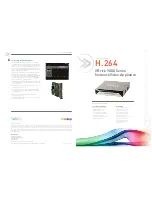
7
913F Powerig® Unit (HK1191)
CHECKING AND ADJUSTING PRESSURES
Check PULL and RETURN pressures before use, before
troubleshooting, and after overhauling. See pressures
given in the specific tool instruction manual. To check
pressures, use T-124833CE Pressure Gauge and its
instruction manual.
ADJUSTING PULL PRESSURE
NOTE: PULL pressure is the maximum Powerig pressure. Do
not exceed the pressure rating of the installation equipment.
See the installation equipment manual for pressure rating.
1) Loosen the jam nut of the high pressure relief valve.
2) Turn the adjusting screw clockwise to increase PULL
pressure
OR
counterclockwise to decrease PULL pressure.
3) Tighten the jam nut after PULL pressure has been
adjusted.
4) Check PULL pressure. Follow instructions in the
appropriate section of this manual.
ADJUSTING RETURN PRESSURE
1. Loosen the jam nut on the kick-down valve.
2. Turn the adjusting screw clockwise to increase RETURN
pressure, or counterclockwise to decrease RETURN
pressure.
3. Tighten the jam nut on the kick-down valve after return
pressure has been adjusted.
4. Check RETURN pressure. Follow instructions in the
appropriate section of this manual.
Checking and Adjusting Pressures
WARNINGS:
Maximum PULL pressure is 8400 psi.
Refer to
specific tool instruction manual for PULL and
RETURN pressures. Severe personal injury may
occur if excessive pressures cause violent failure
of equipment. Higher than normal pressures will
also cause premature wear of equipment.
If recommended maximum pressure is exceed-
ed, violent failure of fastening system may
occur. This may cause severe personal injury.
Operation
BEFORE EACH USE:
1) Check the fluid level in the reservoir and add hydraulic
fluid as required.
2) Inspect hoses for damage and wear. If hoses show wear
that has removed more than the surface texture, they
must be replaced.
3) Check the entire system and repair any leaks.
4) Check electrical cord and extension for abrasion and
replace as required.
Be sure that:
1) Hose from PULL PRESSURE on the control panel runs to
the port stamped with a letter P on the tool.
2) Hose from RETURN PRESSURE on the control panel runs
to the port stamped with letter R on the tool.
Plug the control cable from the tool into the two-prong
socket on the Powerig Hydraulic Power Source. Press the tool
trigger switch and let the Powerig operate for a few minutes
to circulate fluid and remove air from the system. Attach a
nose assembly to the installation equipment. Fasteners may
now be installed. Follow instructions in the tool manual.
Operating Tools
Start the engine following instructions on the engine. Check
pressures and adjust as necessary. See the appropriate
sections in this manual.
WARNINGS must be understood
before checking pressures.
Connect hydraulic hoses from a
HUCK hydraulic tool to the Powerig Hydraulic Unit.
SERVICE
Introduction of foreign material into Hydraulic Unit will result
in poor performance and down time for repair. To avoid this,
observe the following good practices:
•
Clean area around filler cap before adding hydraulic fluid.
•
Use a clean funnel with a filter.
•
Keep quick-disconnect couplers clean by keeping them off
the floor.
•
Wipe off quick-disconnect couplers before connecting them.
BEFORE USE
Fill the reservoir with hydraulic fluid, approximately 5 gallons
(19 liters), until the fluid level is within one inch of the top of
the sight gauge.
Preparation for Use
CAUTION: The Powerig® Hydraulic Unit is
shipped without hydraulic fluid.
WARNINGS:
High pressure hydraulic fluid escaping from pinhole leaks in hydraulic equipment can cause an injection injury which
could result in tissue damage, amputation or even death. Work gloves will not protect against pinhole leaks. Before
each use of hydraulic equipment, inspect with pressure relieved. Replace any worn or damaged hydraulic parts
immediately with items recommended for the application by the original manufacturer.
Hydraulic fluid which penetrates the skin is highly toxic. If you experience an injection injury, seek medical attention
immediately. The sooner effective treatment is received the less chance long-term disability will occur.




































